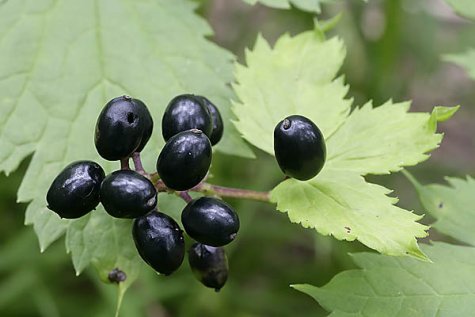Baneberry black: eyecatching
Photo: Arne Ader
Translation: Liis
Baneberry
| Baneberry, black baneberry |
Salu – siumari
|
Actaea spicata |
A plant with the old Estonian word for snake - siu – in its name must have been known as poisonous since ancient times. The whole of the baneberry is toxic, and smells unpleasantly in addition.
Its habitats are indicated by the first part of its Estonian name, salu, meaning fresh mixed forests. It is a lush, half-metre high bushy plant, with leaves with two or three leaflets (bi- or tripinnate). The fruits are shiny black, slightly oblong, in eye-catching clusters on the stems. According to the botanists they are capsules, and the taste is, mildly put, nauseous. They contain anemonine with an etching effect. On eating they cause burns in the stomach as well as in the mouth, accompanied by strong and increasing stomach pains. Without scaring anyone unduly it is useful to know that for children the poisoning may be significantly more dangerous.
In older European literature the plant was known as Herb Christopher; the saint in question protected magicians and treasure-seekers but also plague victims.









